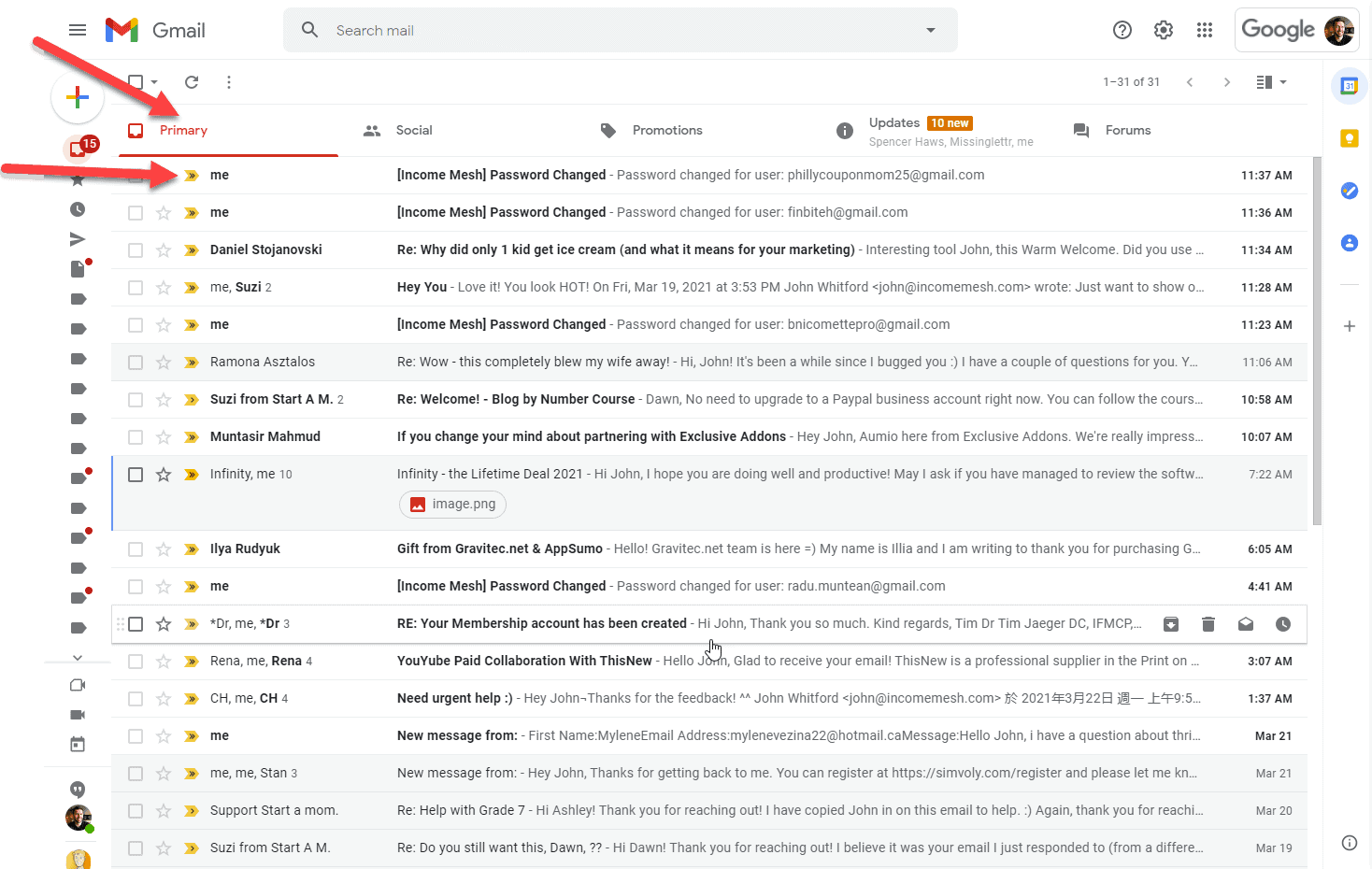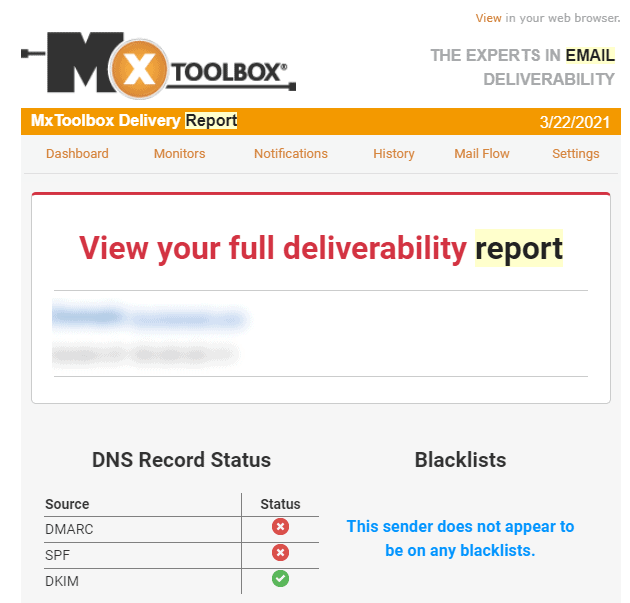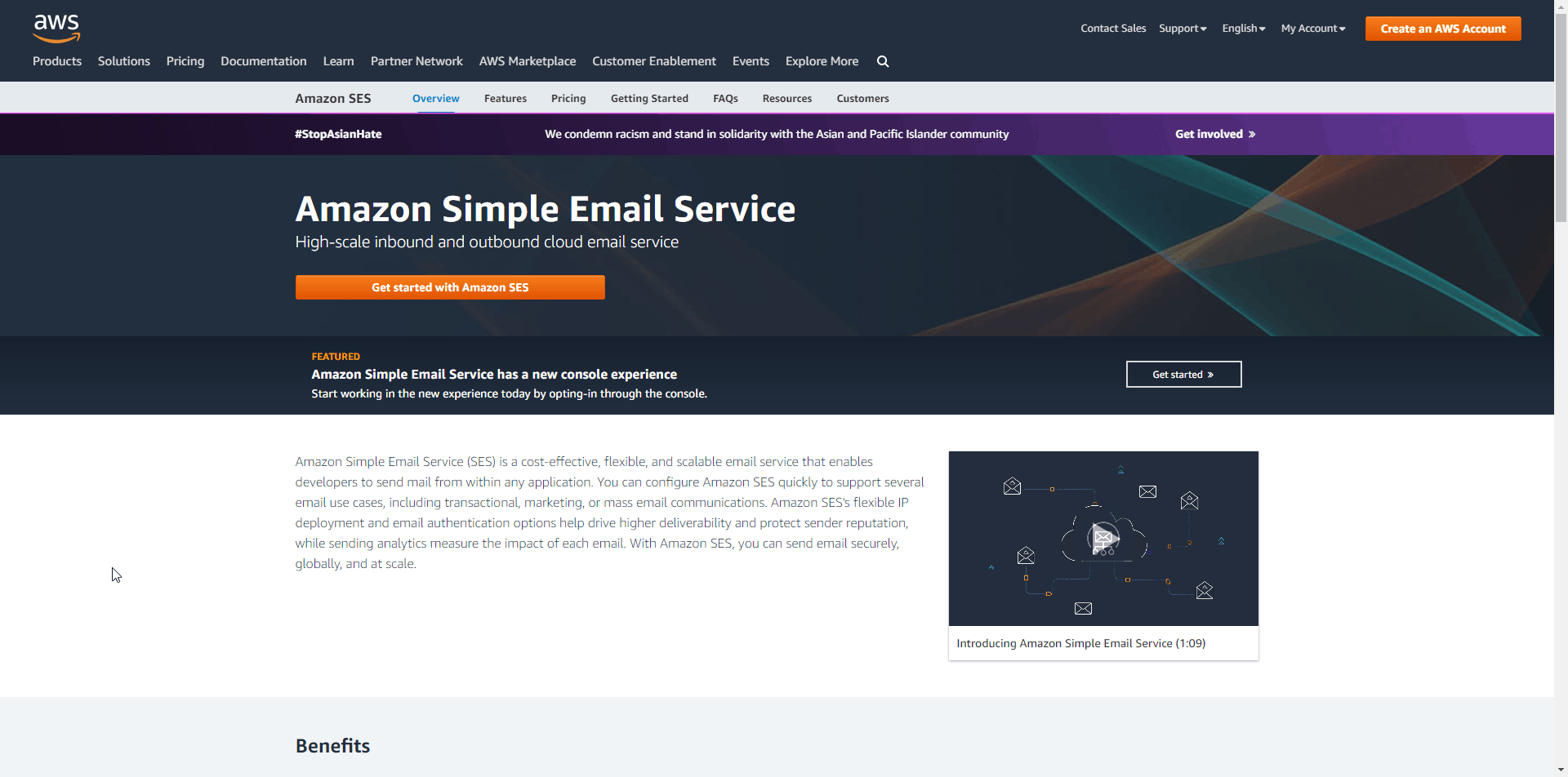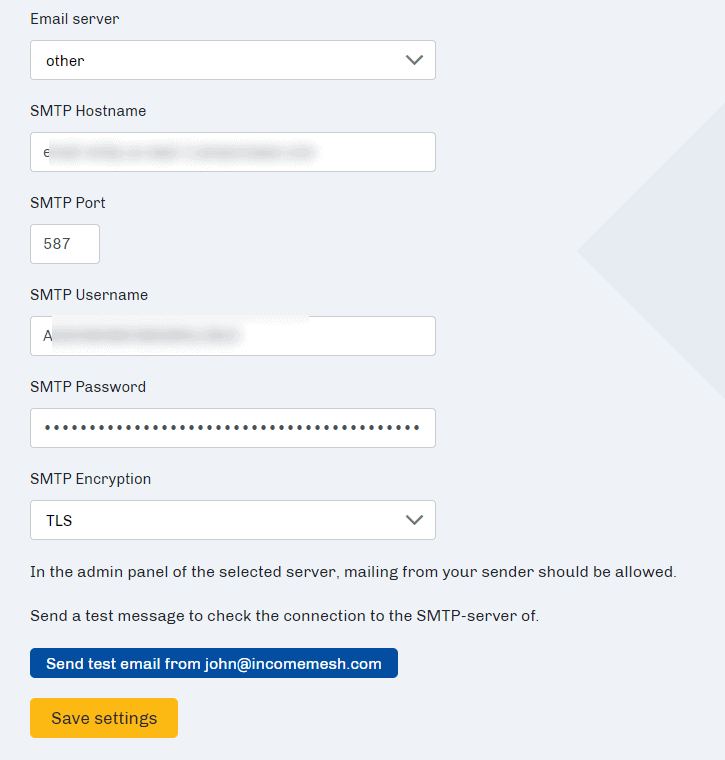What is the number one challenge for marketers?
Deliverability.
Most emails are blocked, deleted, or otherwise filtered out before they ever reach the inbox.
Only 1 in 3 emails even make it to a person's inbox because of how many filters and spam-traps exist today. The average open rate sits at 20% with an average click through rate at 2%. So what can you do to improve your deliverability?
That's exactly or any cover in today's article. Let's dive end.
What is Email Deliverability
Email deliverability is a measure of how effective your messages are at getting to the inbox of your target audience.
This is an incredibly important topic to understand, because it’s getting increasingly competitive to reach our audience and have them consume our content.
And we’ve all heard the mantra, “The money is in the list.”
Which is 100% true, but only if our list can actually receive and open our messages.
What exactly is a delivered message?
That’s a great question, and if you ask 3 different marketers, you might get 3 different answers.
I think of deliverability as a spectrum. From best to worst, these are some deliverability outcomes you can expect:
- Delivered to Primary Inbox, marked as important
- Delivered to Promotions or Updates tab
- Delivered to Spam Folder
- Delivered but Marked as Spam
- Rejected by Email Provider
- Bounced
Some of these might need a bit of explanation, so I’ll break it down a bit more for you.
Delivered to Primary Inbox, Marked as important. Many email providers use your past behavior to automatically sort your mail for you into appropriate buckets.
Gmail is most famous for doing this extremely well, both categorizing mail into tabs such as
- Primary
- Social
- Promotions
- Updates
- Forums
In addition to tabs, some messages are also flagged as important or not important based on past user behavior.

So clearly, the best delivery you can hope for is to both land in the primary tab AND marked as important.
Can this ever actually be achieved as a marketer? YES (but it takes a bit of work).
Next up is Delivered to Promotions or Updates tab. This is definitely still a delivery of your mail, but it definitely has a less visibility and greater skepticism from your reader.
Basically, this just means you haven't built up enough trust with your subscribers AND the email service providers.
Don't worry, we'll cover this!
Delivered to spam folder. This is definitely not a good place to be. This means that there is a bit of a road ahead of you to get your emails to the primary inbox, but at least you are sending emails to real email addresses... so that's comforting!
Generally if you are landing in the spam folder - it means one of two things.
- The person you are emailing has marked previous messages as spam.
- Your reputation has been harmed enough to have email providers like GMail and Outlook automatically mark you as spam.
Rejected by Email Provider. Yes, email providers even have the authority to prevent your emails from even hitting the inbox at all.
This is generally called a soft bounce, and the best email marketing platforms will show you analytics on your bounce rates for every email.

And finally, bounced is simply where you send emails to email addresses that do not exist at all.
As we all know - some meanies will sign up for your email list with a very credible email address like asduiyfghoavboasbfoawebf@gmail.com just to try to get your freebie without ever seeing an email from you.
Not nice!
Why am I not getting delivered?
There are tons of reasons why emails might end up in spam, but don’t worry - you’re in the right place.
We are going to cover the most common reasons emails fail to hit the inbox in this tutorial.
But before we dive into the individual (and sometimes) technical reasons. Let's just think big picture for a second.
Let's pretend that instead of talking about emails and inboxes, we are simply taking care of our kids.
We as parents know that some people are really good influences in our children's lives, and others are ... not something we want in their world.
If we are the kids in this weird metaphor, GMail and Outlook are the parents.

They are using their understanding of us and our needs to approve and reject every message we get.
So before we think technical, what are things you would do if you wanted your friend's mom to approve of you?
- Be kind
- Build trust
- Don't be a stranger
- you get the idea
We will certainly dive into all the technical bits and bobs in this article, but I can't over-stress the idea that all these algorithms aren't evil, or trying to harm our profits... they are simply trying to protect their users.
So let's put on our best suit, and go build some trust with our audience!
Struggling to get your emails into the inbox? Discover 8 quick fixes you can implement today!
Common problems hurting your deliverability
Let's group the main reasons why emails might not be delivered into two categories: Tech-based reasons and behavior-based reason.
I'll list out the most common reasons why messages are going to spam in the list below, as well as give you some pointers on how to solve each one.
Let's get to it!
Behavior-based reasons for bad email deliverability
I know you probably want me to start with the tech, but in most cases the problem actually sits with how we are sending our messages. So let's start here.

Sending Spammy Messages
Yes, one of the main goals of email marketing is to help you grow your business, but if you send spammy messages that are a constant sales-pitchfest, your subscribers will quickly unsubscribe and mark you as spam.
Problem
Our email inbox is a place of trust and intimacy. Generally when people are getting poor results, they are trying to go for the sale too soon, resulting in a lost trust with their subscribers, and a damaged email sending reputation.
Solution
Avoid using spammy words in your emails like
- Sale
- Free
- Buy now
You get the idea - obviously, there is a time and a place for these words and you are not forbidden from using them, but you want to make sure that value always comes first.
Earn the trust of your new subscribers first by nurturing and giving great value before you start making any sales pitches.

Having one-way conversations
We all have that friend... you know the type. You ask them "Hey, what's up?" and for the next 2.5 hours, you sit silently while your friend goes on a monologue about their everything that has ever happened to them... never asking you a question or giving you the room to speak.
No one likes that guy.
Problem
If you come across as preachy to your audience, you are not engaging in conversation. And if we think about what we want for our kids and their friendships, we want a healthy back and forth.
Solution
Always invite conversations in your emails. Ask questions, and continue the conversation whenever you get a reply.
This has two huge benefits. First, it builds an honest and deep trust with your audience.
But secondly, it shows GMail that people actually want to receive and engage with your emails, which will help increase your sending reputation and help more messages hit the primary inbox.

Not training your subscribers
Did you know that you train your email subscribers to ... train the email providers? Yes, it's a little circular, but with a super simple trick you can almost guarantee better email deliverability for ALL your subscribers.
Problem
The email providers like GMail pick up on little behaviors that your subscribers do to indicate trust. But unfortunately not many people are tech-wizards that know how to appease the email gods. We can fix that!
Solution
In your onboarding sequence, you can create a "Whitelist instructions" process. In fact, you can generate the entire instructions for building one here.
So you can build a whitelist instructions page, and direct people to in a few different places:
- Tell new subscribers to whitelist your emails on your thank you page.
- In your onboarding nurture sequence, add subtle reminders on how and why to whitelist emails
- In your email signature
Once your subscribers are trained at whitelisting your emails, two cool things happen.
That specific subscriber will get all your emails going forward. And GMail will begin to associate your email sending address with higher quality content and will allow you to access future subscribers more easily!

Not Emailing Enough
Problem
Your subscribers likely found you when they were busy and distracted... whether from a Google search, Facebook Ad, or referral from somewhere else online.
We are all busy and if you are not emailing with enough frequency, they will forget all about you, and your next email message will feel like a cold outreach and will get you thrown into the spam box.
Solution
Don't go months without emailing your list! I would recommend setting a minimum schedule of one email per week.
This creates a structure for you to follow, as well as something that your subscribers can rely on.
Your emails don't need to be huge 10,000 word ebooks...
Simply check in, give value, ask a question, and let them move on their day!

Emailing TOO MUCH!
Problem
Life is about balance. You don't want to go quiet for 12 months, but you also don't want to email 12 times per day!
It's good to stay top of mind, but I like to keep respect at the top of everything I do as a digital marketer, so don't overwhelm your audience with too many emails!
Solution
I wouldn't advise emailing any more than one email per day.
The truth is that people aren't going to open your emails every day, so getting into a daily email ritual might actually be a good thing (even though it seems overwhelming at first!).
But whenever you start getting complaints over the frequency of your emails, it's probably because:
- There isn't enough value in the emails you are providing
- There is too much promotion in every email
- You are repeating yourself constantly
Then it's time to adjust and pivot.

Over-designing your emails
Problem
Sometimes less is more. We all want to impress our subscribers, but adding crazy designs and html coding into our email broadcasts simply screams: "I want to sell to you!!"
Solution
I'm a big fan of plain text emails, and studies have shown that plain text emails can positively impact your deliverability.
That doesn't mean you can never include images in your emails (I still do!).
Images can improve relatability, allows you to share personal stories, and more.
But if we think about how our emails look when we are sending them to our co-workers or friends, do we spend tons of time designing them? Nope.
And we should model that behavior when we email our list.
Tech-based reasons for poor email deliverability
Alright, time for the meaty stuff. Behavioral changes can help a ton of problems with email marketing and deliverability, but there are going to be some aspects that absolutely require a technical fix.
Let's walk through the most common and what to do about them.

Not Verifying Your Digital Signatures
Problem
Most email marketing platforms like Convertkit, Mailerlite, and more have their own global email sending service, which manages all the outgoing mail for its users.
But without setting up the proper technical bits in the background, you run a major risk - your emails looking completely fake to the recipient server.
That is because there are invisible digital keys sent with every email, keys such as SPF, DKIM, and DMARC (warning - techie bits ahead).
These are essentially secret handshakes between your domain (ie: unbeatabletech.com) and your email provider that links the two and helps build trust with the gatekeepers inside of GMail.
Strangely enough, not all programs require these records to be set up - but you should ALWAYS do it to prevent yourself from going to spam.
Solution
Any good email marketing provider will have clear instructions in their onboarding on how to verify and authenticate your domains.

An example of the domain verification dashboard in Mailerlite
Your email provider should have instructions on what to do with your records, but once you find your DKIM and SPF records, you'll need to add them to your domain registrar.
Told you we were in the messy techy bits now. Here's an example of how it would look using CloudFlare:

When in doubt - ask your hosting or email marketing tech support for help - or leave me a comment down below and I can go into further detail!
You can double check the status of your records by contacting your email marketing service's support team, or by running a free report at mxtoolbox.

Using a poor email marketing platform
Problem
Not all email marketing platforms are created equal. As I said before, these platforms have a global sending reputation and all users are relatively tied to its performance.
This means that if the platform has an excellent reputation, even newer email marketers have a shot of hitting the inbox.
On the other hand, newer email marketing platforms that have been riddled with spammers can decrease the reputation of even the most seasoned of email marketers.
Scary, right?
Some new platforms try to attract new customers with amazing perks like free starter plans or unlimited contacts - which is very attractive. But it can also attract the wrong attention... spammers.
Once spammers have made their way into a new platform, they can cause serious harm for everyone.
Here's how to fix it.
Solution
Essentially, the only solution here is to take your email sending reputation into your own hands.
So let's say you love everything about your funnel-building platform, but you are getting terrible deliverability on your emails.
You don't necessarily need to jump ship (although that might be a good option).
You can also take matters in your own hands by routing all your emails using your own email server.
This gets tricky - pay attention
Using your own email server doesn't mean you can't use your email marketing platform.
You will still use their platform for writing emails, creating automations, tagging, and all that stuff.
The only thing that changes is what happens after the "Send" Button is pushed.
Instead of relying on your email platform's reputation, you will create a safe and insulating sending route that bypasses any influence from other senders of the platform.
Here's a high-quality 3D rendering of what happens:

My graphics designer deserves a raise
The most popular, cost-effective, and industry trusted tool to set this up with is called Amazon SES: Simple Email Service.
In fact, I use Amazon SES for sending out both Marketing Emails and Transactional Emails (things like purchase receipts and order confirmations).
Setting up Amazon SES can take a few days to get approval, but the process really is not that difficult.
And if you have been struggling with deliverability before, this is one of the most effective methods of taking back control.
Setting up Amazon SES can be a little tricky, and if you'd like a complete tutorial on how to do it, please leave a comment down below to let me know!
Here are the overall steps and some additional resources to accomplish it:
- Create an Amazon SES Account
- Set up billing so you can be charged with you send emails (it's super cheap - about $0.10 for every 1,000 emails sent)
- Follow the steps on this quick start guide from Amazon
- Create SMTP credentials to hook up your Amazon account to your email marketing platform
- Connect the SMTP credentials to the email server section of your platform (image below)
- Send a Test email

In this example I'm showing the SMTP setup of Amazon SES into the Influencersoft platform.
While the platform is overall quite powerful, it has been plagued with poor deliverability, so it is a prime candidate for this method.
However, it can be set up with any platform you'd like to use.
Related: Influencersoft Complete Review
Conclusion
If you're struggling to get your subscribers to receive, open, and click on your emails, I surely hope that this post was a help for you.
Today we've learned 8 different strategies to improve your email marketing deliverability, and if you implement even half of them, I'm sure you will notice a world of difference at getting into the primary inbox tab.
Leave a comment below on which strategy you need to implement next!
